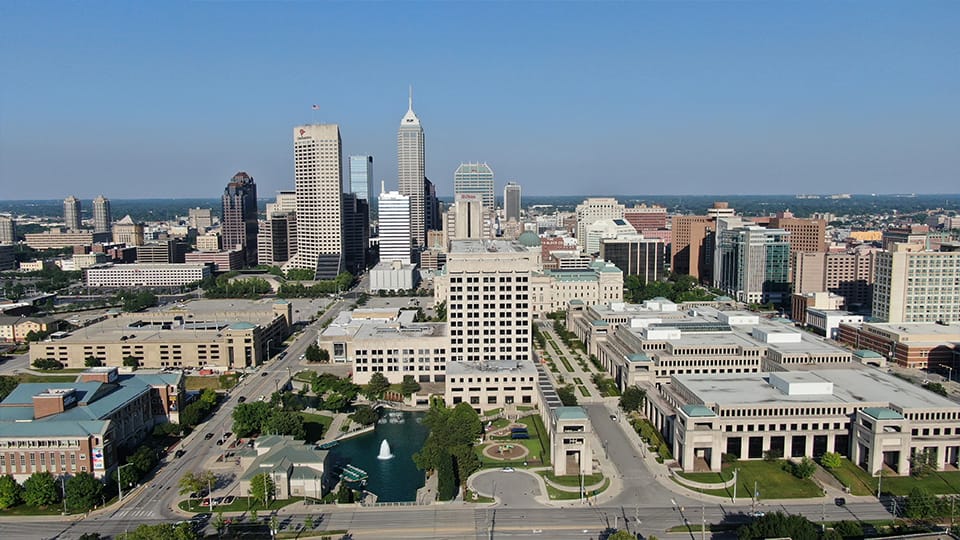Bussiness
Indianapolis to replace Develop Indy in effort to bolster business attraction – Inside INdiana Business

Loading audio file, please wait.
The economic development arm of the Indy Chamber is expected to become a standalone entity next year as part of an overhaul intended to bolster the city’s business-attraction and retention strategy.
Develop Indy, which has been a division of the chamber since 2012, will become a separate nonprofit starting Jan. 1.
The move, city officials said, is intended to streamline discussions between the city, leaders with development firms and companies looking to do business in Indianapolis.
Jim Schellinger, a one-time Democratic candidate for governor who worked for Republican Govs. Mike Pence and Eric Holcomb as secretary of commerce, is being recommended by Indianapolis Mayor Joe Hogsett to be the organization’s president and CEO.
The new development organization hasn’t been formally named but carries the placeholder moniker of Indianapolis Economic Development Corp.. It will be incorporated as a 501(c)6, with a separate foundation that will be permitted to fundraise. Those organizations are expected to be formed by the end of November, with the development-focused organization housing programs for the city’s incentive toolbox as well as permitting functions.
Currently, the city pays Indy Chamber-backed Develop Indy about $2 million annually for economic development services through the Department of Metropolitan Development and the Department of Business and Neighborhood Services. The standalone corporation’s budget for 2025 is expected to $3 million to $4 million.
City officials said the DMD will remain the go-to for developers looking to go through a zoning process, with Business and Neighborhood Services using the expanded capacity of the new economic development group to serve as a conduit for certain city functions like permits and site inspections on projects in which the organization is involved.
“I believe that this organization is going to be successful for all 400 square miles” of Indianapolis, said Dan Parker, chief of staff and chief deputy mayor. “We have a tremendous amount of assets to sell to the world and to keep people here to help them grow. It’s critical to make sure that the organization is selling the city and the growth is seen by all corners of the city.”
More than 30 business executives have been involved in the city’s effort to consider options for the future of Develop Indy over the past several months. The Hogsett administration has hired Katie Culp, CEO of Indianapolis-based advisory Katz Sapper & Miller LLP, to hone the plan for the city’s economic development structure.
The changes are expected to be a marked shift in how the city approaches business attraction, with a similar structure to that of the Indiana Economic Development Corp., a quasi-government state agency headed by the secretary of commerce. That group also uses a foundation to raise funds. Many of its operations are largely shielded from transparency laws.
Money donated to the Indiana Economic Development Foundation is often used for travel expenses related to the state’s attraction and retention efforts, which is likely how the new Indianapolis organization would use its funds.
Hogsett said less than 30% of the city’s leads on new economic development opportunities are generated internally by Develop Indy, with most coming from the IEDC or the Indy Partnership, meaning that “success of this new organization is going to be [measured] in terms of landing job deals” for Indianapolis. The city is also a member of the Central Indiana Regional Development Authority.
“This new independent organization that we’re seeking to create will be that one-stop shop for businesses, whether they be businesses that we want to help grow in Indianapolis, or businesses that we’re trying to encourage to locate in Indianapolis,” Hogsett said. “Why can’t we create an Indianapolis Economic Development Corp., just like the state has the Indiana Economic Development Corp., which has been a very successful organization … at promoting, exclusively, economic development involving any aspect of the state of Indiana. That’s what we’re trying to do at the local level with … an independent organization that will solely focus on economic development for the city of Indianapolis.
Parker said the city looked at Columbus and Cincinnati in Ohio; Kansas City, Missouri; and Nashville, Tennessee, as cities after which it could model the new economic development organization.
Develop Indy and Indy Chamber staff were informed early Thursday afternoon of the shift to a new structure and the plan to hire Schellinger. The economic development agency employs five people, but it is unclear how many will transition to the new organization, which will be wholly controlled by the mayor’s office.
As part of the new structure, Schellinger will replace the role of deputy mayor of economic development and directly report to the mayor on economic development deals. The Indianapolis mayor will also be chairman of the entity’s board and have sole discretion for board appointments. The structure is similar to what is already in place for Develop Indy, which has an advisory council with mayoral appointments.
“We feel like now is the time for us to step up and make this a more robust organization,” he said. “That’s going to be one of the primary things that Jim’s going to work on is—not just creating the organization, but make it such that it’s competitive with all of the cities that we look at as who we compete with.”
During Schellinger’s time as secretary of commerce, the state secured at least $32 billion in planned capital investment, including deals involving the city of Indianapolis for a new Elanco Animal Health Inc. headquarters at the former General Motors stamping plant and a campus for technology consulting company Infosys Ltd. near Indianapolis International Airport, which has struggled to get off the ground after being deterred by the coronavirus pandemic.
Parker said Schellinger also brings to the role something many of the individuals from whom the city sought feedback on its plans considered important: business experience.
Schellinger has been involved in the Indianapolis business community since 1987, when he joined Indianapolis-based CSO Architects, becoming president of the firm in 1996. He also ran for governor in 2008, but lost to Jill Long Thompson in the Democratic primary. He was appointed as secretary of commerce by Gov. Mike Pence in 2015, remaining in the role until March 2021.
“I’ve been around quite a while, but where we’re at as a city is pretty cool, it’s probably the best I’ve ever seen,” Schellinger told IBJ. “I can’t remember a time that people should be more optimistic in terms of the success we have … because of what’s happening in the city right now. We always have to improve, but the point is I go around the world sometimes and come home and kiss the ground I walk on, because this is a pretty good country. Indiana is a pretty good state, and Indianapolis is the center. We take that for granted too much.”
It remains to be seen whether existing projects that have been spearheaded by the mayor’s office, such as the effort to secure a Major League Soccer franchise and the redevelopment of Circle Centre Mall, will ultimately move to the new agency.
As they do now with Develop Indy, both the Metropolitan Development Commission and the City-County Council will continue to have oversight of the development corporation, although it will technically remain separate from city government. The city will contract with the group for development services, bringing proposed project incentives to the bodies for approval, starting with the MDC’s Community Economic Development Committee.
Story Continues Below









:max_bytes(150000):strip_icc()/TAL-header-irvine-farmers-market-irvine-ca-FARMERSMARKET1124-dd1f797649da4820ac4dcc37ffcd353f.jpg)
